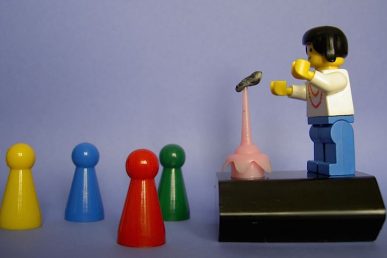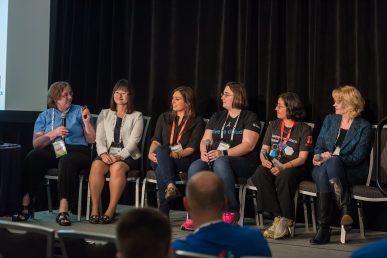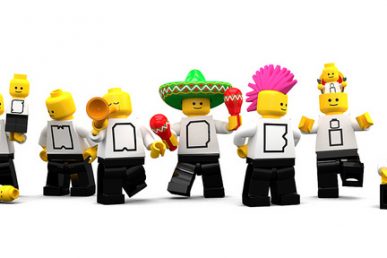You prepared, you submitted, you were accepted; congratulations! The OpenStack community is intelligent and engaged, so expectations are always high. Whether this is your 50th or first talk at an OpenStack Summit, here’s five little ways to make sure your talk is a success.
Focus on the non-obvious
Assume your audience is smart and that they’ve heard a talk about your subject before. Even if it’s a 101 talk where your goal is educating about the basics, what can you say that will be unique to your presentation? What could they not find out by Googling your topic? Make sure to present something new and unexpected.
A good presentation sells better than a sales pitch
Unfortunately, the quickest way to empty a room—particularly in the OpenStack community—is to use talk time to push a service or product. This might conflict with company expectations––someone probably wants to see an ROI on your talk and maybe even sent over talking points. Instead, create interest in your company or product by being an outstanding representative and demonstrating smarts, innovation and the ability to overcome the inevitable challenges. The “sales pitch” is not what you say about a product, but it is you and how you present.
Shorten your career path story
It’s very common for talks to begin with “first, a little about me,” which often sounds like reading a resume. While this can create an audience connection, it eats up valuable presentation time and takes the focus off the topic. Instead, share only the relevant pieces of your career to set up your expertise and the audience’s expectations.
Take a look at the difference between these examples:
Frequently done: “My name is Anne and I’m currently a marketing coordinator at the OpenStack Foundation. I started off in renewable energy, focusing on national energy policy and community engagement; then I became a content writer for a major footwear brand; then worked at an international e-commerce startup; and now I’m here! In my free time I race bicycles and like riding motorcycles.”
The audience has learned a lot about me (probably too much!), but it doesn’t give them a single area of expertise to focus on. It distracts the audience from the topic of my talk.
Alternative: “My name is Anne and as the marketing coordinator at the OpenStack Foundation, I work on our social media team.”
I’ve established my professional connection to the topic, explained why they should listen and foreshadowed that we’ll be talking about social media marketing.
Conversation, not recitation
Memorizing a script and having the script in front of you (like on a phone) is a common device to try to soothe presentation nerves. Ironically this makes your presentation more difficult and less enjoyable for the audience. When you trip up on a word (and we all do!), it can cause you to lose the paragraph that precedes it. Reading off a device will make your presentation sound artificial.
Instead, rehearse your presentation but use slide graphics or brief bullets to keep you on message. Pretend you’re having a conversation with the audience; just a cup of coffee over a very large table.
P.S. Make sure you budget time for conversation with your audience, and bring a few thought-provoking questions of your own to get the discussion started.
Humor doesn’t always work in international audiences
OpenStack has a wonderfully international community, which means that many people in your audience may not be native or fluent in the language you are presenting in. Idioms, turns of phrase or plays on words can be particularly difficult to understand. Instead of leaning on humor, tell a story about how something came to be, or a critical error that we can all see the humor in.
Looking forward to the incredible talks slated for the upcoming Summit; good luck, presenters!
- Five ways to make your OpenStack Summit talk a standout - October 10, 2018
- Say hello to Kata Containers 1.0 - May 22, 2018
- How to make your OpenStack Summit talk a big success - April 6, 2018

)










